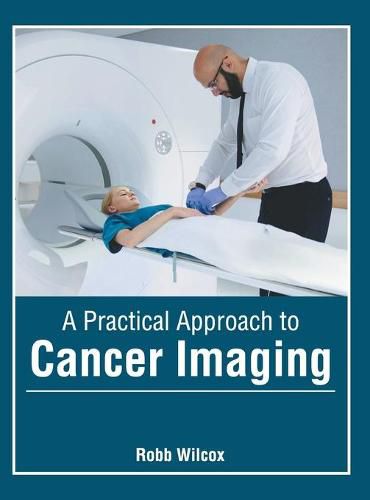Readings Newsletter
Become a Readings Member to make your shopping experience even easier.
Sign in or sign up for free!
You’re not far away from qualifying for FREE standard shipping within Australia
You’ve qualified for FREE standard shipping within Australia
The cart is loading…






This title is printed to order. This book may have been self-published. If so, we cannot guarantee the quality of the content. In the main most books will have gone through the editing process however some may not. We therefore suggest that you be aware of this before ordering this book. If in doubt check either the author or publisher’s details as we are unable to accept any returns unless they are faulty. Please contact us if you have any questions.
Cancer is one of the leading causes of death in the world today. The lethality of the disease can be attributed to its ability to divide uncontrollably, and infiltrate and destroy normal body tissue. The best chance for a cure lies in its diagnosis in the early stages. Cancer imaging allows the examination of the body and other internal organs in a noninvasive manner. Various imaging tests can aid in the diagnosis of cancer at all stages, such as X-ray, MRI, CT scan, mammogram, PET scan, ultrasound and bone scan, etc. X-rays use invisible electromagnetic beams for producing images of bones, organs and internal tissues. CT scan integrates X-rays and computer technology to produce axial or horizontal images of the body. This facilitates detailed images of the bones, fat, muscles and organs. A mammogram can help to detect breast cancers, while tumors in the abdomen, kidney and liver can be detected through sonography. MRI facilitates the visual assessment of soft tissues, particularly the brain, heart, pancreas, liver, reproductive organs, etc. A PET scan holds valuable insights into the metabolism, physiology and biochemical properties of an organ or tissue, as well as the progress of the treatment. This book contains some path-breaking studies in the field of cancer imaging. It outlines the diverse techniques of cancer imaging and their applications in detail. It is appropriate for students and experts seeking detailed information in oncology and medical imaging.
$9.00 standard shipping within Australia
FREE standard shipping within Australia for orders over $100.00
Express & International shipping calculated at checkout
This title is printed to order. This book may have been self-published. If so, we cannot guarantee the quality of the content. In the main most books will have gone through the editing process however some may not. We therefore suggest that you be aware of this before ordering this book. If in doubt check either the author or publisher’s details as we are unable to accept any returns unless they are faulty. Please contact us if you have any questions.
Cancer is one of the leading causes of death in the world today. The lethality of the disease can be attributed to its ability to divide uncontrollably, and infiltrate and destroy normal body tissue. The best chance for a cure lies in its diagnosis in the early stages. Cancer imaging allows the examination of the body and other internal organs in a noninvasive manner. Various imaging tests can aid in the diagnosis of cancer at all stages, such as X-ray, MRI, CT scan, mammogram, PET scan, ultrasound and bone scan, etc. X-rays use invisible electromagnetic beams for producing images of bones, organs and internal tissues. CT scan integrates X-rays and computer technology to produce axial or horizontal images of the body. This facilitates detailed images of the bones, fat, muscles and organs. A mammogram can help to detect breast cancers, while tumors in the abdomen, kidney and liver can be detected through sonography. MRI facilitates the visual assessment of soft tissues, particularly the brain, heart, pancreas, liver, reproductive organs, etc. A PET scan holds valuable insights into the metabolism, physiology and biochemical properties of an organ or tissue, as well as the progress of the treatment. This book contains some path-breaking studies in the field of cancer imaging. It outlines the diverse techniques of cancer imaging and their applications in detail. It is appropriate for students and experts seeking detailed information in oncology and medical imaging.